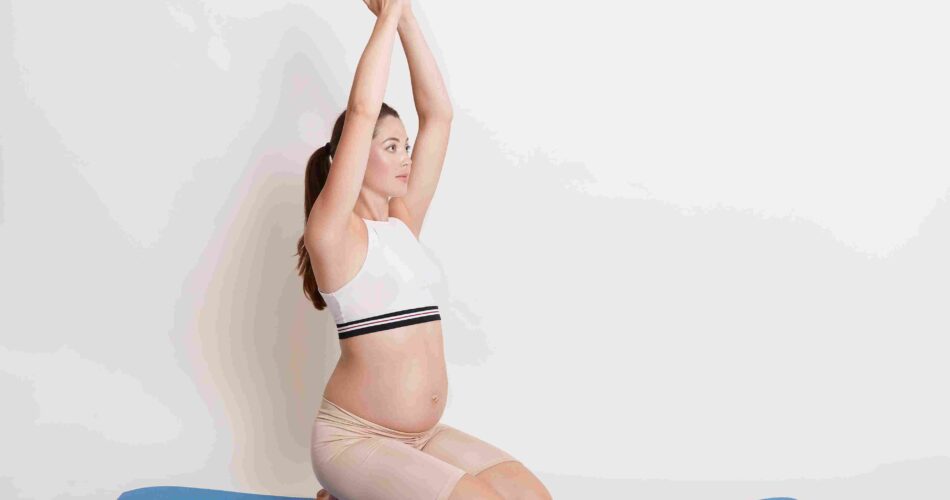- What is Hatha Yoga
- Hatha Yoga – A Bit of History
- What You Need to Start Practicing
- What Will Increase the Effectiveness of Your Practice
- Tips for Beginners – How to Avoid Common Mistakes
- Benefits of Practicing Hatha Yoga
- Contraindications to Practice
- Hatha Yoga at Home – Is it Possible?
- First Trimester – Nuances
- Second Trimester – What to Keep in Mind
- Third Trimester – Preparing for Childbirth
- Where to Start with Hatha Yoga
- Basic exercises and exercise techniques
- Main Asanas – Marjaryasana
- How to Strengthen the Pelvic Floor Muscles
- Adho Mukha Svanasana – nuances of practice
- Viparita Karani and Shavasana – How to Perform the Exercises Correctly
Hatha yoga is the most popular type of Eastern practices. Alongside Pilates, aerobics, and boxing, this type of yoga is a staple in any fitness center. It is very important to find a good instructor who will introduce you to yoga gently and effectively and teach you how to correctly perform pranayama (breathing exercises) and asanas (body positions).
However, it can be practiced at home, not just in a club. To ensure that practice is beneficial, it’s important to follow simple yet very important rules that help avoid mistakes commonly encountered by beginners. Hatha yoga for beginners is also appealing because it doesn’t require any special equipment.

What is Hatha Yoga
The essence of Hatha Yoga has not changed throughout its thousands of years of existence. Only human attitudes towards it have changed due to constant shifts in perception of reality and paradigms of thought. To understand the essence of the practice, one must delve into the meaning of the words, where “hatha” has two roots. “Ha” means mental energy or mind, and “tha” means life energy or prana. From this, Hatha is an organic symbiosis of life energy and mental forces. Traditionally, this word is translated as “a means to achieve strength through yoga.”
Thus, Hatha Yoga is a set of techniques that can be applied to the human body. The main elements of this eastern practice are:
- breathing techniques – pranayamas;
- static positions and body poses – asanas;
- cleansing techniques – shatkarmas;
- chanting or pronouncing certain words or sounds;
- specific hand gestures – mudras.
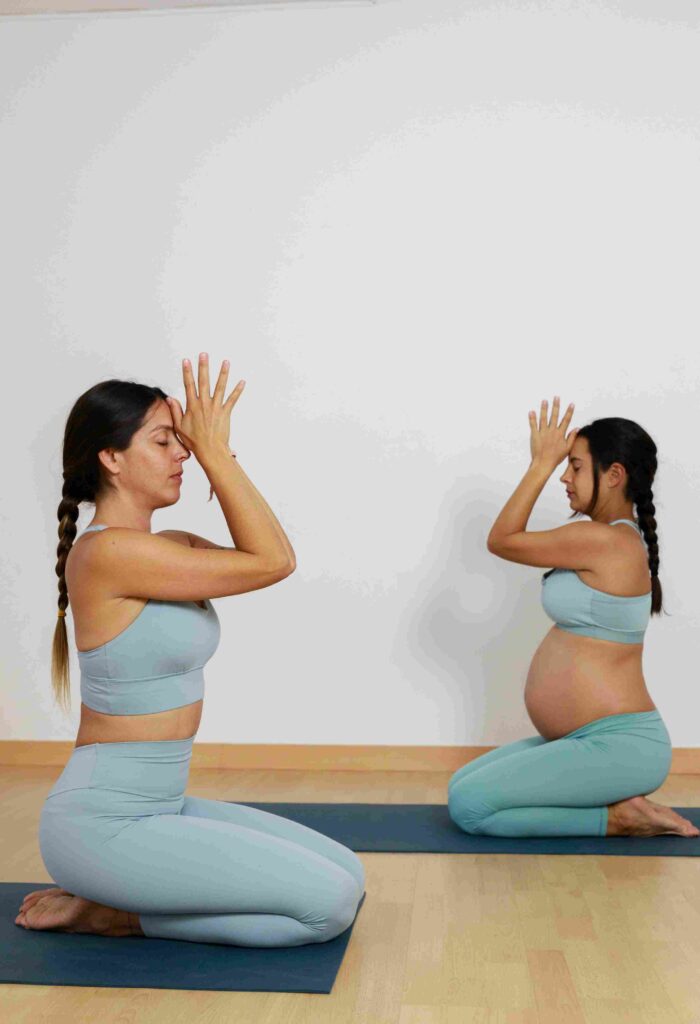
Hatha Yoga – A Bit of History
Hatha yoga originated over 5000 years ago in Northern India as a system of practices to prepare the body for deep seated meditation. The guide “Hatha Pradipika” was compiled in the 15th century by the Indian sage Swatmarama. The sacred text, still preserved today, details the correct appearance of each asana of hatha yoga, how to practice cleansing shatkriyas and pranayamas. The guide highlights the main goal of classical yoga – awakening one’s own life energy.
Additionally, ancient Indian scriptures – the Vedas, mention three more branches of yoga. However, all of them are not related to physical development of the body and are closely intertwined with religious concepts. They include yogas: Bhakti – the path of service, devotion, and selfless love; Karma – yoga of selfless action; Jnana – the path of knowledge and wisdom. Therefore, Hatha yoga for beginners is the optimal choice for practice.
What You Need to Start Practicing
Sports stores offer a wide range of specialized yoga mats featuring textured patterns and antibacterial coatings. You can perform a set of exercises on a folded blanket or gym mat. Performing certain asanas can be challenging for pregnant women. To relieve extra stress and support their body, expectant mothers can place a bolster under their lower back or neck, using a blanket rolled up as a bolster. A wide strap will be useful for stretching limbs.
It is customary to practice barefoot. Attention will be required only for clothing selection. The clothing should have a loose fit, minimal seams and fasteners, and be made from natural materials. If a woman decides to master the basics of hatha yoga on her own, she should ensure there are no contraindications, study video courses, and equip herself with self-study guides, as well as familiarize herself with the recommendations of experienced instructors.
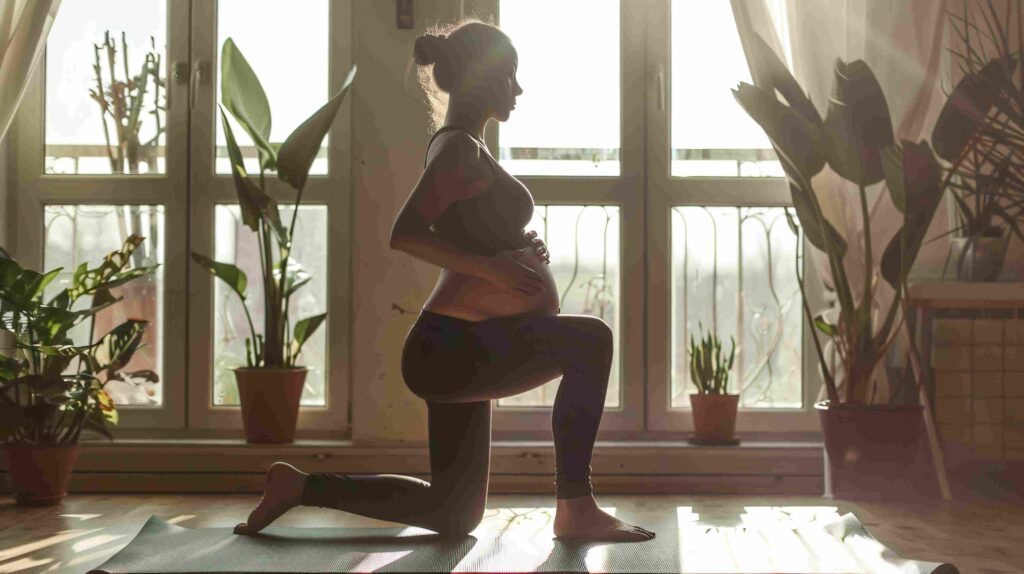
What Will Increase the Effectiveness of Your Practice
Once clothes and a mat are acquired, beginners should start with setting a goal. A pregnant woman needs to set a realistic goal for herself and work towards achieving it daily, as well as establish a specific time for practice. It is necessary to determine how many times a week and at what time the Hatha yoga sessions will take place. Also, practicing at home is convenient because you can take a break at any time. Regularity will help you commit to longer sessions.
During practice hours, no one should disturb the woman, and it’s best to turn off the phone. Once starting the exercises, one should pay attention to their sensations. Any, even the slightest pain, serves as a signal for a temporary halt of the practice. The correct start for performing hatha yoga exercises for beginners is slow, with a warm-up, and a gradual transition to more complex asanas.
Tips for Beginners – How to Avoid Common Mistakes
Ideally, one should start practicing hatha yoga before pregnancy. Since beginners in any field often forget the rules, resulting in mistakes. Incorrect exercise execution at home can negatively affect the child’s development and the pregnant woman’s health.
To avoid this, it is necessary to exclude:
- the desire for quick results;
- improper breathing;
- incorrect technique for entering and exiting a pose;
- excessive and sudden increase in physical activity;
- exercising after meals or while feeling hungry;
- neglecting thorough muscle warm-up before activities;
- relaxation in intervals between performing asanas and lack of rest.
Additionally, it is essential to try to devote at least a quarter of an hour daily to asanas, avoid making up for a missed session by increasing the load the next day, and follow advice from video lessons.
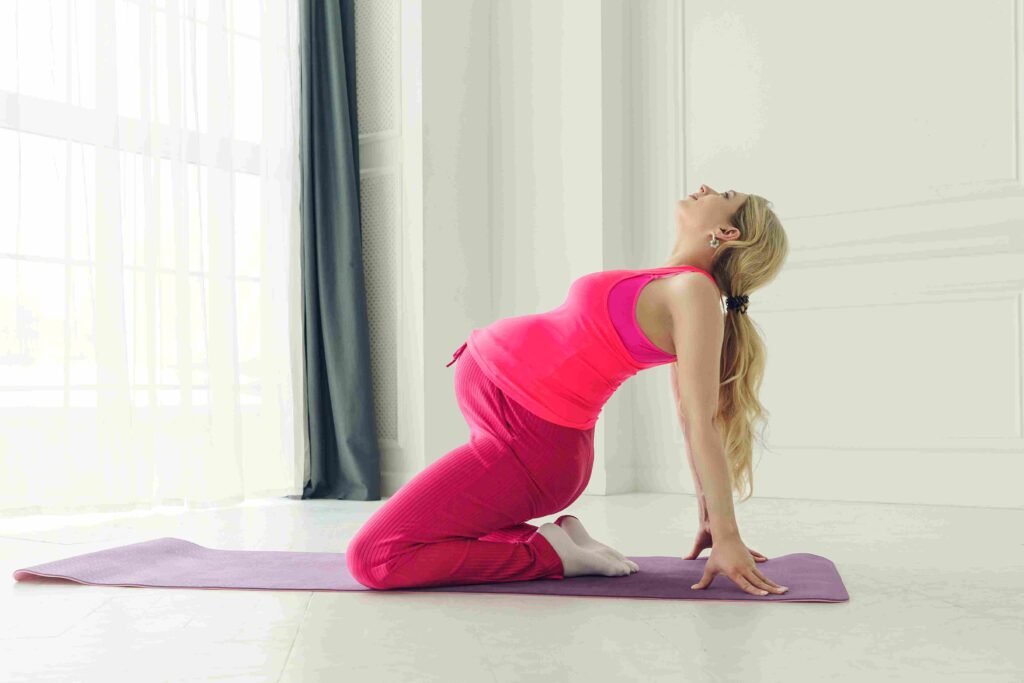
Benefits of Practicing Hatha Yoga
If a woman did not practice Eastern techniques before pregnancy, it is absolutely necessary for beginners to consult with the gynecologist supervising the pregnancy before starting hatha yoga sessions. Training with the correct execution of poses and well-coordinated breathing will undoubtedly benefit both the expectant mother and the baby, as it helps normalize hormonal balance, enhances the central nervous system, improves metabolism, and develops flexibility. This flexibility allows the woman to take a comfortable position and the baby to assume the correct position before birth.
Concentration and proper breathing help manage emotions and achieve relaxation. Moreover, the exercises strengthen the musculoskeletal system, making it more flexible, allowing the body to better handle pregnancy-related stresses, and return to good shape after childbirth.
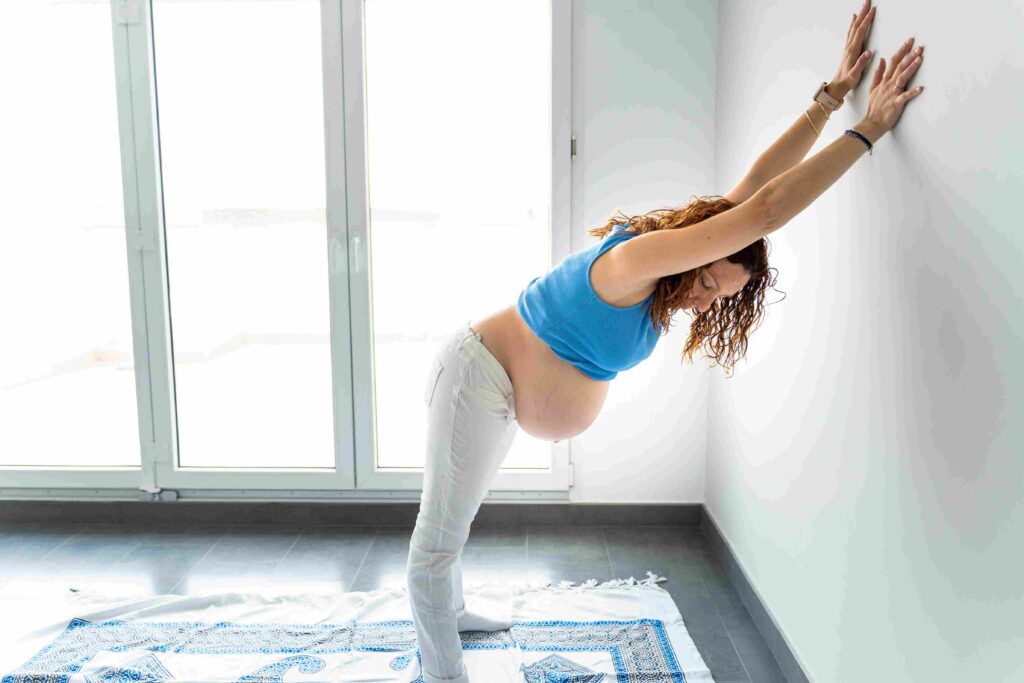
Contraindications to Practice
Despite the undeniable benefits even for beginners, Hatha Yoga has several contraindications that make practice impossible. Every pregnant woman should be aware of them. Among others, they include:
- the last week of pregnancy;
- physician’s prohibition due to the expectant mother’s unstable condition or risk of miscarriage;
- presence of bleeding of varying intensity;
- multiple pregnancy;
- dizziness, tachycardia;
- diagnosed accompanying somatic diseases;
- significant weight loss due to severe early toxicosis;
- miscarriages in previous pregnancy attempts or complicated current pregnancy;
- polyhydramnios.
Hatha Yoga at Home – Is it Possible?
Many expectant mothers are concerned about whether beginners can practice Hatha Yoga on their own without attending special classes led by experienced gurus in this field. To answer this, it is necessary to recognize and understand all the risks of performing asanas and breathing exercises incorrectly for pregnant women who have never practiced such training before.
As already mentioned, it’s better to start before pregnancy, but if that wasn’t possible, it’s still best to take the first steps under the guidance of a trainer skilled in teaching Eastern practices specifically for pregnant women. Once the basic poses are mastered, it is possible to conduct the exercise routine at home, using a video course for a detailed breakdown of individual body positions. Additionally, the trimester in which a pregnant woman decides to start Hatha Yoga is an important consideration.
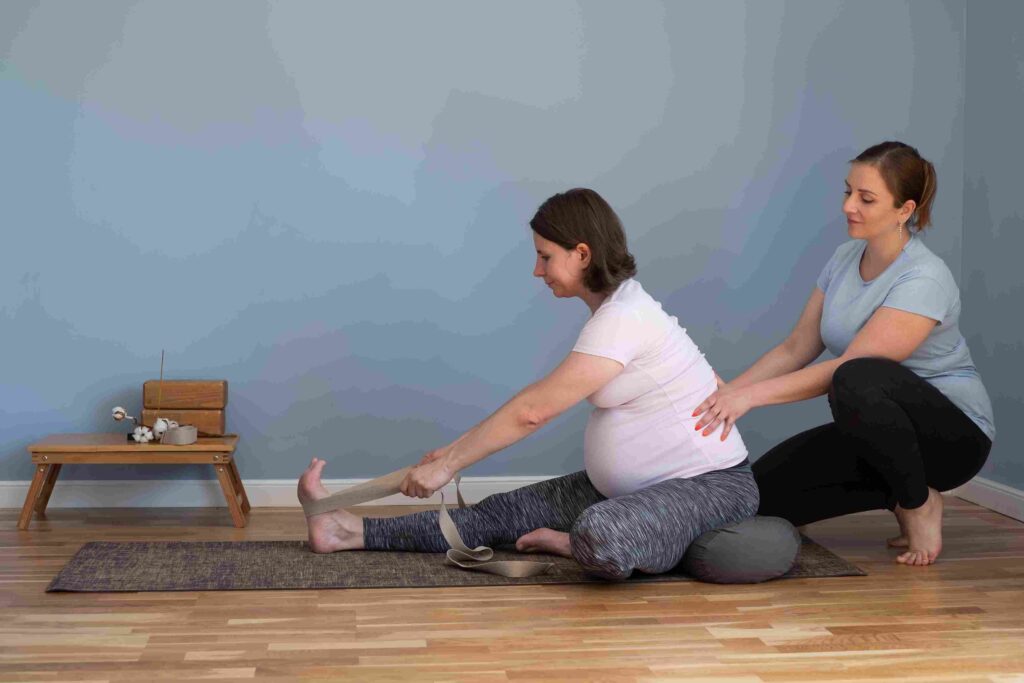
First Trimester – Nuances
Practicing this Eastern discipline in the early stages of pregnancy is not always recommended. Specifically, for beginners in hatha yoga, it’s likely that a woman will be advised to wait until the second trimester in her new condition, but there are exercises that can be performed in the 1st trimester. By the second trimester, the baby’s organs will form, and the pregnancy will be more stable and established. However, if a woman led an active lifestyle before pregnancy and is in perfect health, there is no reason to delay the beginning of yoga practice.
However, when performing the exercise routine, it is important to follow a number of rules, including obtaining approval from a gynecologist to start classes; excluding all positions that place increased strain and tension on the pelvic and abdominal muscles, avoiding overexertion; prohibiting jumps, sudden transitions, compressions, and poses with a backbend from a prone position on the stomach. Remember that the time held in each position should not exceed a few seconds.
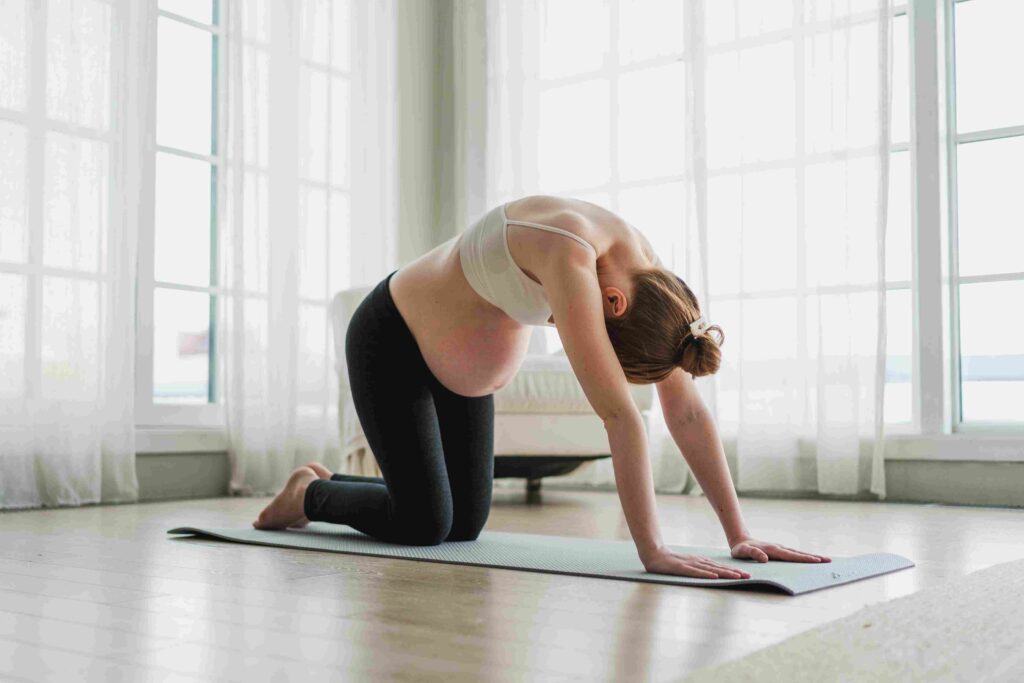
Second Trimester – What to Keep in Mind
The most favorable time for beginner hatha yoga practice is the second trimester of pregnancy. Discomforting symptoms are left behind, and the expectant mother is full of energy and strength. During this period, some inverted poses that perfectly stabilize the hormonal background, as well as standing positions, are most beneficial. The main focus now, along with your own well-being, should be on the condition of the future baby, performing poses only with pleasure.
At this stage of pregnancy, avoid being independent too much. It’s necessary to use the support of your partner, special pillows, and supports. You will need to avoid lying on your back, as the blood flow is impaired due to the growing uterus pressing against the vena cava. This can lead to fainting for the mother and hypoxia for the baby. Obviously, poses lying on the stomach are also absolute taboos now, as are deep bends and twists, and many inverted poses.
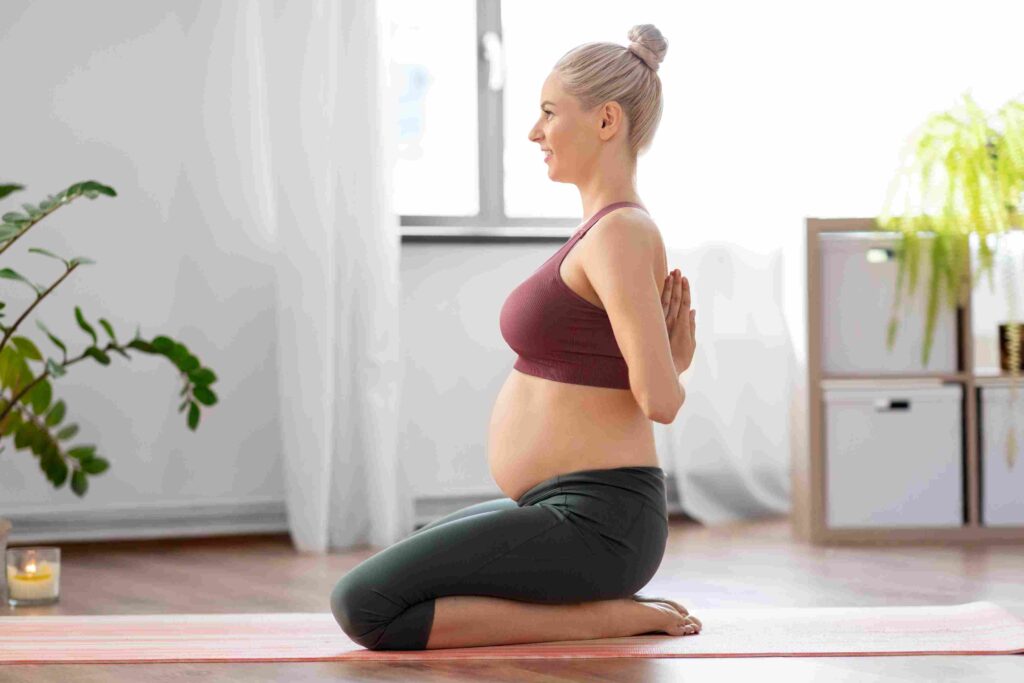
Third Trimester – Preparing for Childbirth
The mother’s activity decreases in the next period, focusing on gentle preparation for the upcoming birth and rest. The number of asanas is significantly reduced since the baby is already quite noticeable. If attending group classes regularly is becoming difficult, you should take advantage of the set of exercises for pregnant women in the third trimester, which are specially designed and recorded on video by professional instructors.
Attention should be focused on performing poses lying on the side or with support. Inverted poses are completely excluded. Beginners in Hatha yoga should focus on relieving pressure from the spine, which is experiencing immense pressure. At this stage, it’s important to monitor the gastrointestinal tract’s function. Breathing exercises are particularly relevant, as is mastering new techniques to regulate the body’s functions during contractions and creating a pain-relieving effect.
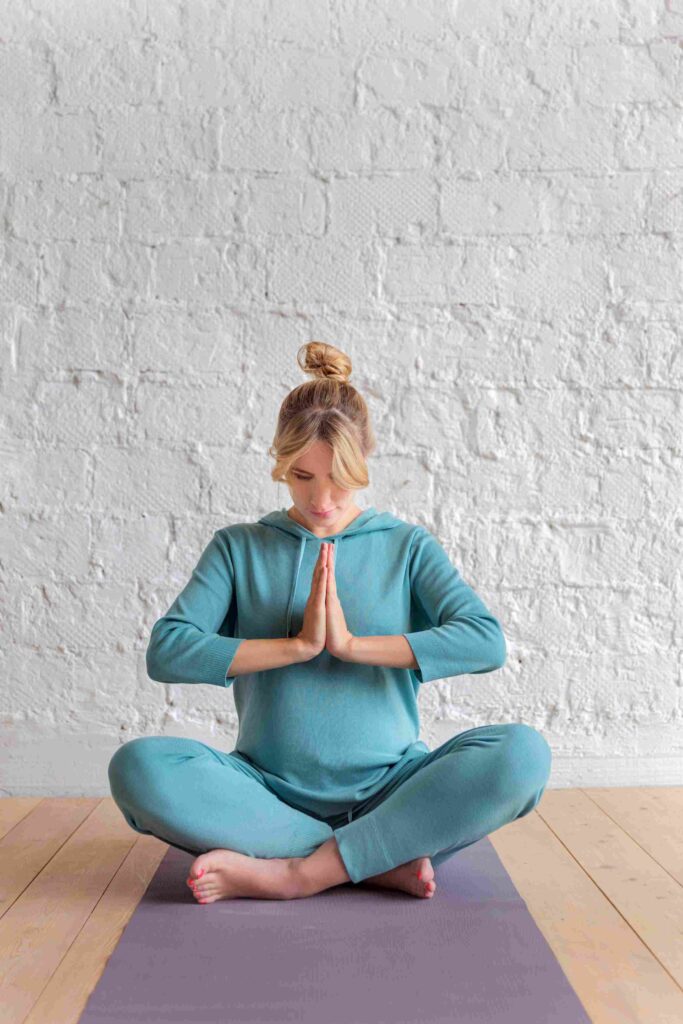
Where to Start with Hatha Yoga
Once all precautions are observed and the pros and cons are carefully weighed, you can begin to take the first steps. Initially, it is worth attending beginner Hatha yoga classes led by a specialist, observing how women with at least minimal skill perform poses and breathing exercises.
In addition to physically preparing the body for upcoming childbirth, practicing hatha yoga exercises will undoubtedly benefit by stabilizing the nervous system and hormonal balance. Thus, it is worth starting with defining and understanding your goals when beginning hatha yoga for beginners, along with familiarizing yourself with a basic set of exercises that correspond to the current trimester of pregnancy, the woman’s condition, and her level of physical fitness.
Basic exercises and exercise techniques
Exercise routines are adapted for pregnant women to best assist them in carrying their baby and preparing for childbirth. Some specialists recommend Surya Namaskar (Sun Salutation) – a morning hatha yoga routine for beginners, which includes simple and effective exercises. These include:
1. Pranamasana – standing on both feet, a relaxed posture with a straight back, hands in front of the chest folded in namaste.
2. Hasta Uttanasana – a backward bend with straightened arms upwards, elbows fully extended, palms joined, head slightly tilted backward.
3. Padahastasana – with the stretching of spinal muscles, a forward bend is performed with straight legs. Neck is relaxed, head hanging down.
4. Chaturanga Dandasana – a plank on bent arms, with feet on toes at the edge of the mat, palms resting on the floor under the shoulders, arms bent at elbows.
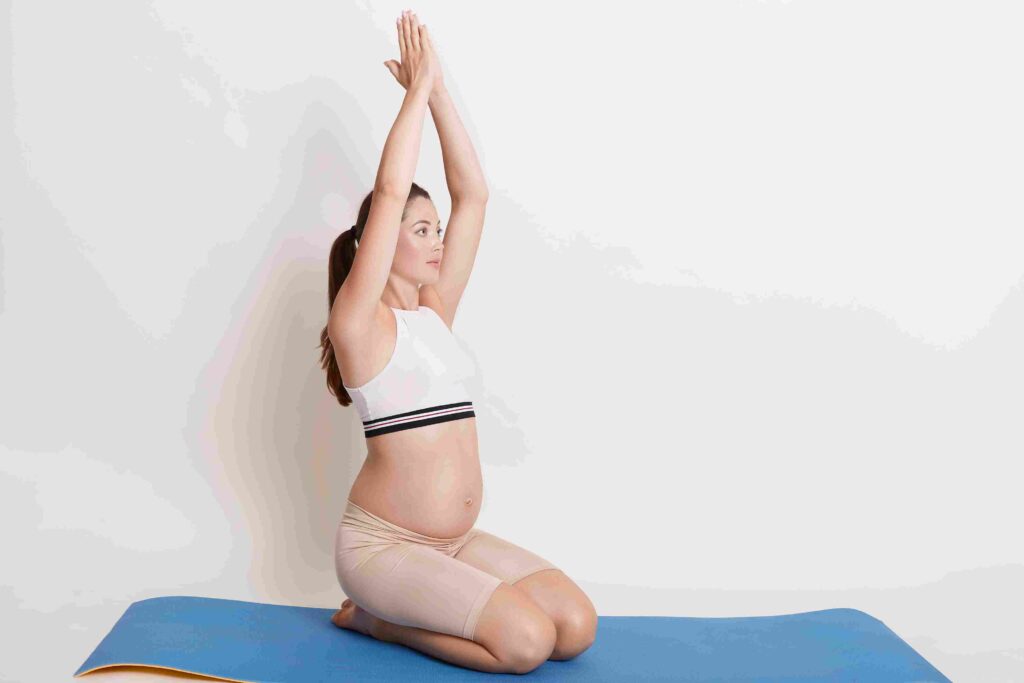
Main Asanas – Marjaryasana
In addition to the morning routine, other sets of exercises from hatha yoga for beginners can be performed. Each asana should be performed for a few minutes, sufficient for each expectant mother to work on her muscles according to her personal sensations. If discomfort appears, the pose should be exited. Particularly effective are Marjariasana (cat pose), Adho Mukha Svanasana (downward-facing dog), Viparita Karani (inverted pose), and Shavasana (corpse pose).
Marjariasana (cat pose) should be performed by getting down on the mat with knees bent. The straight arms should be shoulder-width apart and rely on the palms. The chest stretches down towards the floor on the inhale, and on the exhale, rounds the back, returning to its original position.
How to Strengthen the Pelvic Floor Muscles
An important positive effect of practicing hatha yoga during pregnancy and childbirth preparation is the strengthening of the pelvic floor muscles. The best exercises for this are Marjariasana (Cat Pose) or Shashankasana (Rabbit Pose). By assuming the Cat Pose and bending the arms at the elbows, the head is placed on the hands folded together. The pelvic floor muscles should be tensed on inhalation and relaxed on exhalation.
The exercise can also be performed in the Rabbit Pose – Shashankasana. To perform it, the woman kneels on the mat with the front surface of her shins, bending her legs at the knees. The legs should be slightly apart, and the pelvis should rest on the heels. The abdomen should be comfortably positioned between the knees, and the arms extended as far forward as possible.
Adho Mukha Svanasana – nuances of practice
When performing this asana, pregnant women who are starting to explore this Eastern practice should initially take the pose near a wall, using it as support when leaning. Adho Mukha Svanasana (Downward-Facing Dog) is performed in a position with palms and feet resting on the mat. The body is elevated above the floor in an angle with the pelvis directed upwards.
To ease the burden, the pregnant woman should choose a suitable variation of the exercise for herself. If it is difficult to fully straighten the legs and place them on the mat with the entire foot, the knees should be bent to a comfortable position, and a bolster can be placed under the heels. Bending the arms at the elbows, one can rest the palms and forearms on the floor. If it is not possible to bend low, a chair can be placed in front and held with the hands while performing the asana.
Viparita Karani and Shavasana – How to Perform the Exercises Correctly
Among the most effective hatha yoga poses for beginners is Viparita Karani (Legs-Up-the-Wall Pose). Performing this pose for pregnant women involves using a wall for support. You need to place the mat close to the support, and the woman lies on her side, positioning her pelvis as close to the wall as possible. ‘Walking’ upwards, she stretches her legs along the wall. The hands are placed over the abdomen, with breathing even and calm. Beginners should remain in the pose for 3-5 minutes. Over time, it’s beneficial to maintain the inverted position for 10-15 minutes and place a small pillow under the pelvis.
Savasana (Corpse Pose) is also effective. It is performed lying on the back with arms spread to the sides and palms facing up. Feet are brought together, with a pillow placed under the knees for comfort. Another variant is lying on the side with a pillow between the thighs, placing the knee of the top leg on the mat. Resting in this pose is a beneficial way to conclude an exercise session.


Download the app and get 7 days free use
 eng
eng rus
rus deu
deu spa
spa fra
fra ita
ita por
por srp
srp tur
tur ukr
ukr por
por bos
bos